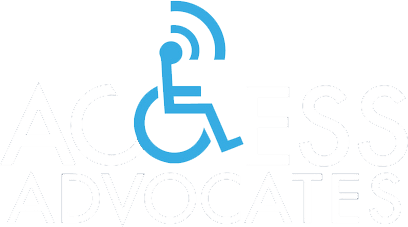 The Federal 2010 ADA Standards for Accessible Design amended the 1991 ADA (Americans with Disabilities Acts) Standards that required “full and equal access” to buildings and public spaces for people with disabilities. They mandated old buildings be converted for accessibility and new buildings built to be ADA compliant. Such accommodations were required in state and local government facilities, services and transportation, child care centers, schools and municipal playgrounds. In addition, wheel chair ramps had to be safe.
The Federal 2010 ADA Standards for Accessible Design amended the 1991 ADA (Americans with Disabilities Acts) Standards that required “full and equal access” to buildings and public spaces for people with disabilities. They mandated old buildings be converted for accessibility and new buildings built to be ADA compliant. Such accommodations were required in state and local government facilities, services and transportation, child care centers, schools and municipal playgrounds. In addition, wheel chair ramps had to be safe.
Almost 25 years after the first ADA act, and almost five years after the second version, there are still battles across the country around compliance.
At first glance, it would seem that the Hollister Co. Clothing Store is being compliant. There are wheel chair ramps that lead into the store. However, the ramp doesn’t extend to an elevated porch. There are steps leading up to the porch from the mall and steps down from the porch into the inside of the store. Most of the 249 Hollister Co. stores in the United States are built the same way. Advocacy groups, along with the Department of Justice as amicus, won in district court, arguing, “(1)..the existence of an elevated porch violates the ‘overarching aims’ of the Title III of the ADA because people who cannot use the stairs cannot enjoy it; (2) the porch itself is a ‘space,’ and all spaces must be accessible; and (3) the accessible entrance must be the one used by the ‘majority of people.’” However, in mid-October, The Ten th Circuit Court of Appeals disagreed on all three counts. The court is located in Denver, but covers Oklahoma, Kansas, New Mexico, Colorado, Wyoming, and Utah, plus those portions of the Yellowstone National Park extending into Montana and Idaho.
The October 19 Juneau (Alaska) Empire reported the plight of Ivan Nance, who uses a wheel chair. He produced a video showing the difficulties he and his girlfriend/caretaker experience getting around Juneau, and accessing public buildings and services for individuals with disabilities. His neighborhood does not have curb cuts, so he is forced to use the street. The video also shows difficulty maneuvering in doorways and urinals in public restrooms. There are no automatic door openers to rest rooms, making it difficult for the health care worker to push a person in a wheelchair into the bathroom. Further, Nance and his girlfriend argue, since there are no “family friendly rest rooms,” where the female helper could help the male client, entering an all-male rest room is uncomfortable. Family friendly rest rooms are not part of the ADA standards.
There is some good news. On October 18, Staff Sgt. Brian Mast, a double-amputee veteran of the war in Afghanistan, his wife and two young children, received the keys to their new ADA compliant home in the Watercrest development in Parkland, FL. Standard Pacific Homes donated the land, the philanthropic organization, Help A Hero, donated $100,000 of the $450,000 cost, and subcontractors contributed in kind donations. The new Mast home includes “spacious family gathering areas along with four bedrooms and three baths, hardwood and tile floors, flush thresholds, wider hallways, wider door entries… a roll in shower, roll under sink, grab bars, and a roll in shower with an elongated shower seat.”
If you are a person with a disability and believe you have been discriminated against, or find inaccessible areas, please contact us at Access Advocates. Keep in mind that not all disabilities are visible. A disability, as defined by the ADA, can also be a health problem, such as cystic fibrosis, or cognitive, mental health, intellectual, developmental, learning among others.
